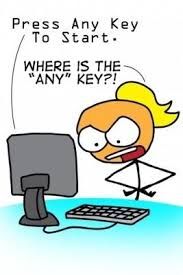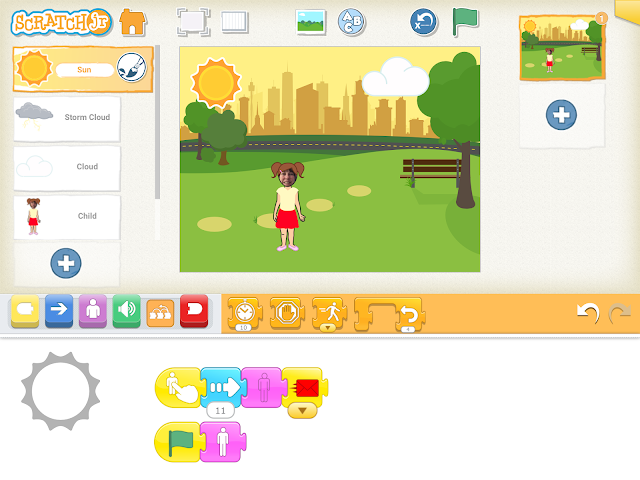A lesson sequence for Cross Curricular Teaching - STEM and learning outside
By Meridith Ebbs @iMerinet @MakeCreateEducate
Updated - Originally written for Issue 2 of STEMed Magazine https://issuu.com/stemedmagazine/docs/final_stem_ed_magazine_issue_2
Cross-Curricular Teaching
Cross curricular teaching is a pedagogy that can be used to address the time poor classroom. Currently many learning areas are taught in a silo’d fashion, using case studies and resources designed specifically for each subject worksheets for English, units designed for History and Geography and text books for Mathematics. With the curriculum being overcrowded if you can overlap key learning areas in your teaching it allows more time to cover additional content.
Cross curricular teaching is when you teach English but complete a comprehension on the theory content associated with a Science unit. It is when you teach graphing in maths but use the results of a science investigation as the content rather than using favourite pizza toppings. Use mathematical language when discussing maps in Geography. This still requires the explicit teaching of vocabulary and skills and reminding students this language is used in other learning areas. Cross curricula teaching then demonstrates that content is not silo’d in particular subjects.
 STEM theory and STEM concepts can be used in learning areas not associated with Science, Technology, Engineering and Mathematics by using a cross curricula approach or a thematic approach to content. Thematic teaching was very popular in the 80’s and 90’s and with the emphasis on literacy and numeracy it has gone out of fashion. (Rawling, 2007)
STEM theory and STEM concepts can be used in learning areas not associated with Science, Technology, Engineering and Mathematics by using a cross curricula approach or a thematic approach to content. Thematic teaching was very popular in the 80’s and 90’s and with the emphasis on literacy and numeracy it has gone out of fashion. (Rawling, 2007)
By teaching in a cross curricular manner it also allows you to demonstrate how STEM concepts link to other learning areas such as History, Geography, English Arts and sports. There are several benefits to the use of cross curricular teaching
Assists with the crowded curriculum by using theoretical concepts in reading material students can learn about science in their reading and comprehensions. This increases vocabulary and encourages comprehension in subjects relevant to their other learning areas.
It engages students who may not enjoy English but love Science.
It allows for real world integration of skills and problems in History and Geography that have a STEM focus. Such as the use of drones for mapping.
Cross curricular teaching increases student exposure to thematic vocabulary and applications for tier 2 language (Mackenzie, 2017) such as arrange, compare, contrast, analysis and evaluate. When teaching comprehension use content associated with themes from Science, History and Geography.
Sample Lesson sequence
Some project ideas for integrating STEM content across key learning areas in a year 3/4 class on the topic of living things. These lessons can be woven into your explicit English, Maths, Science and Technology programs.
Lesson 1 A comprehension on the characteristics of living things using MRS GREN (Science and English)
Lesson 2 Drawing features of living things https://aca.edu.au/resources/pig-dog/ (Technology)
Lesson 3 Classification of living things https://aca.edu.au/resources/decision-trees-classifying-animals/ (Science and Technology, Outside)
Lesson 4 Code a Microbit with a variable for counter to be used for data collection outside on living things https://microbit.org/projects/make-it-code-it/counter/ (Technology)
Lesson 5 Investigation and survey of living things outside using a Microbit counter (Maths and Science, Outside)
Lesson 6 After data has been collected record the data in a tally table. (Maths)
Lesson 7 Features of a graph - graph the living things observed in Lesson 4 and tallied in lesson 5 (Maths)
Lesson 8 Take photos of living things in the playground (ICT Capabilities and Science, Outside)
Lesson 9 Make a scientific drawing of your living things you photographed either from photos or live (Art and Science, Outside)
Lesson 10 Create a banner for a podcast. (Art)
Lesson 11 Write a persuasive text on how human could change behaviour to reduce impact on living things
eg: Being a careful fisherperson when fishing, Reducing meat in your diet https://www.abc.net.au/btn/classroom/storm-girl/10790848 and https://www.petakids.com/save-animals/eating-animals-ruins-planet/ (English and Science)
Lesson 12 Record the persuasive text as a podcast (ICT Capabilities and English)
Lesson 13 Design and produce a habitat for a creature - frog pond or cardboard craft (Technology)
Lesson 14 Lesson volume (Maths)
Lesson 15 Science Investigation on the sensitivity of plants to light. (Science)
Lesson 16 Code a Microbit water sensor https://makecode.microbit.org/projects/science (Technology)
Lesson 17 Science Investigation on the amount of water required by plants to survive, water plants and take recordings daily over a term (Science, Outside)
Lesson 19 Graph the water required by each plant in the investigation (Maths)
Geography
In Geography, consider living things and the management of local spaces. Who is responsible for local environments and how do they influence spaces we use as citizens. How does management impact on living things and endemic ecosystems?
History
How did Aboriginal people manage their environment (https://www.dpi.nsw.gov.au/education-and-training/school-resources/sea-country) and how did they use living things for food and medicine.
The benefit of cross-curricular teaching is it allows for a deeper dive into STEM content and provides more opportunity to integrate concepts across relevant learning areas. Cross-curricular teaching is not used at the expense of explicit teaching in other key learning areas however it is a practical way to approach teaching to provide an in depth study rather than 1-2 hours per week on each subject area.
 Learning and Teaching Outside
Learning and Teaching Outside
Nature Pedagogy is “the art of being with nature, inside, outside, and beyond.” It is about connection with nature and not separation. When you move your classroom outside and allow students time to sit and appreciate their surroundings it creates an opportunity to enhance well-being. This creates an opportunity to appreciate natural surroundings, consider relationships to both land and each other as a community of learners. This creates a time to truly understand our connection to the land and the role humans play in caring for the world. (Warden, C., 2018)
Nature Pedagogy is an understanding of our sense of belonging to land, our sense of working with nature. There is a pedagogical shift when you move outside into nature... it's learning with nature, not just teaching about it."
- Claire Warden (2021)
Nature Pedagogy may be conducting a simple lesson outside such as art or paired reading, lie in the grass for a moment of quiet and mindful contemplation or an opportunity to conduct a scientific or mathematical inquiry.
Many students can go through 13 years of school and do not experience the opportunity of learning outside. Why do we insist on teaching inside most of the time? Consider setting up chairs outside your classroom for reading groups, painting or quiet work. Or moving your entire class outside for an explicit lesson with portable whiteboards.
In an urban school teachers may need to be creative with where they can teach outside on a regular basis. It is important to consider the playground as an outdoor space that can be used for appreciating nature. The outdoor space will look different for each school, a grassy patch, the shade of a tree or even a rug on a basketball court or in the middle of a football oval. Outside learning will require a risk assessment according to your schools policy and procedures.
You will need to bring student hats and maybe a mat to sit on. For more formal lessons you may need pencils, a writing surface - an outdoor journal/scrapbook, clipboards, whiteboards or paper.

Magnifying glasses
Binoculars
Field guides for identifying plants, insects or birds.
Water bottles
Teaching outside uses Nature Pedagogy and aligns with teaching STEM and cross-curricular teaching. It allows you to learn about real world problems. Teaching outside you can introduce Science, Technology, Mathematics, Arts or Physical Geography concepts.
One quarter of the lessons mentioned previously are designed to be conducted outside either in your playground or during an offsite excursion. This provides opportunities to integrate real experiences with real data and link these experiences to lessons conducted in the classroom.
Outdoor Learning
Outdoor lessons in STEM have so many opportunities to integrate concepts that make more sense when taught with physical problems. The key to teaching outside is selection of themes and concepts that rethink out we address curriculum:
Science
Investigations in the school garden
Data surveys of living things
Land surface processes
Scale modelling of space
Using Microbits for
Pedometer
Compass
Counter
Thermometer
Sensors
Light
Temperature
Movement
Rugged robots
NavigationPosition
Engineering and Design
Constructing pulley systems to move objects
Design and construct shelters
Cardboard construction
Maths
Measurement
Mapping
Position
Orienteering
Geocaching
Scale models
Arrays
Volume
Surveying with data.
Rethinking how curriculum is taught creates a new focus on content that provides an opportunity for teaching the whole child. Learning outside allows for kinesthetic learning and children can engage with their surroundings. It also provides an opportunity to clear the mind and enhances student wellbeing. Integration of content across key learning areas is a programming method that requires thinking about content in different ways that may not align with worksheets and text books. It allows for the integration of real world and physical problems not possible in a classroom..
References
Introducing scientific language (2021). Available at: https://www.education.vic.gov.au/school/teachers/teachingresources/discipline/english/literacy/Pages/scientificlanguage.aspx (Accessed: 13 March 2021).
Media, W. (2021) Nature Pedagogy | Claire Warden Ltd, Claire-warden.com. Available at: https://www.claire-warden.com/nature-pedagogy/ (Accessed: 21 March 2021).
Natural Start (2018). Claire Warden Available at: https://naturalstart.org/feature-stories/nature-pedagogy-common-thread-connecting-nature-based-settings-worldwide (Accessed: 21 March 2021).
Posts, V. (2017) A focus on vocabulary, Noella Mackenzie. Available at: https://noellamackenzie.com/2017/07/28/a-focus-on-vocabulary/ (Accessed: 14 March 2021).
Smashing Silos! (2021). Available at: https://www.edutopia.org/blog/smashing-silos-ainissa-ramirez (Accessed: 13 March 2021).
Vocabulary (2021). Available at: https://www.education.vic.gov.au/school/teachers/teachingresources/discipline/english/literacy/readingviewing/Pages/litfocusvocab.aspx#link72 (Accessed: 14 March 2021).










Comments
Post a Comment